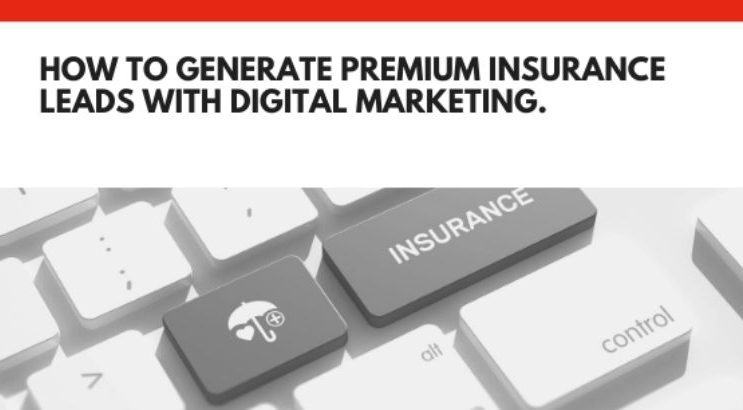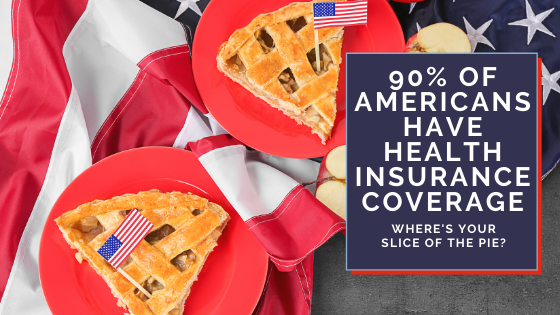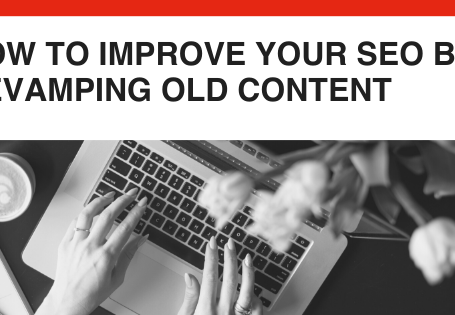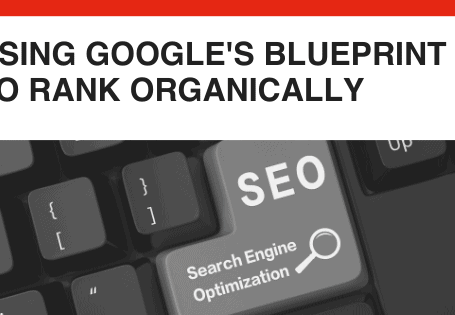How to Generate Premium Insurance Leads With Digital Marketing
By: Rank Media

There’s nothing more fascinating than working on campaigns for the insurance space, particularly when it comes to health insurance and Medicare. While it does seem rather odd to advertise health insurance as a commodity from the perspective of a citizen from the land of hockey pucks and maple syrup fiestas, the market in the United States provides ample opportunities for insurance agencies big and small.
Whether you’re running a large call center or operate as an independent agent, the opportunities to generate traffic and convert leads is immense regardless of economic conditions.
Ensure Your Site’s Potential with SEO
After navigating my way through the insurance space for over six years, I’ve been witness to some of the biggest sites in the industry rise and fall when it comes to generating organic traffic. Without naming names (because that would just be rude), I’ve seen premium exact match domains go from king of the mountain to the court’s jester, all at the mercy of Google & it’s ever-changing algorithm standards. Phooey.
Generating a significant amount of organic traffic from search engines entails a strategic plan of action depending on your geographic footprint. For insurance agents and companies that operate in a local environment, mastering local listings is one piece of the pie.
For example, we helped an auto insurance agency in North Carolina increase organic traffic by optimizing all local listings on major platforms (such as Google, Yelp, and Facebook) and creating region-specific landing pages on their main website. It’s critical to refrain from duplicating content across your website to avoid any potential doorway pages penalties from Google. If you create bland, unoriginal content for every single possible exact match of a keyword, you’re liable to get wrecked by the search engine giant.
It isn’t 2006 anymore, buddy.
National websites with insurance products for multiple states face enormous challenges, especially without any physical locations for regular consumers to book appointments. Insurance agencies and brokers typically operate from call centers, fielding thousands of calls each day to convert inbound requests into paying customers.
Websites targeting a myriad of states will need to invest far more resources into search engine optimization than single-area businesses due to immense competition with national carriers, brokers, and independent agencies. The lead generation game has exploded in this sector, as has the number of websites indexed for various insurance products.
As a result, SEO & content marketing strategies must be multi-faceted and appeal to broad audiences and structure content according to where users fall in the sales funnel.
Sales Funnel? Content? What’chu Talkin’ Bout Willis?
Aligning your strategy with the TOFU-MOFU-BOFU inverse pyramid can be immensely fruitful (don’t worry tofu haters, we’re not talking about food in this case).
TOFU: at the top of the content marketing cycle, we have the awareness stage, where the most general pieces of content will generate the most impressions. Think of the articles you’re creating at this stage as a metaphorical fishing line used to catch as many interested fish as possible with tempting bait. It’s at this stage in the content lifecycle where your blog will be your best vehicle, touching on wide-ranging topics that can appeal to large segments of your niche audiences.
For example, an insurance company specializing in selling Medicare Advantage & Supplement plans may find value in developing a series of resources to assist users that are turning 65 years old. Transitioning to the retired life is a significant life event for seniors, especially when it involves Medicare enrollment.
MOFU: this is the consideration stage, where specific resources regarding comparing insurance quotes and plan details can be beneficial. In this stage, users are actively analyzing information from different insurance companies. The MOFU stage is where you can convert prospects with well-written content matching their specific searches. While your blog may serve as an entry point for users, optimizing content within your website on targeted product/service pages may assist in qualifying warm traffic into potential viable leads.
Continuing with the Medicare example, this may be the prime opportunity to develop videos, eBooks, and other pieces of content regarding the differences between Medicare Advantage and Medicare Supplement plans. These educational resources provide added value to your organization & can be optimized on a myriad of platforms, generating an abundance of organic traffic.
BOFU: at the bottom of the sales funnel, we have users entering the decision stage, where your content needs to be actionable to convert leads into customers. At this point in the content lifecycle, prospects are ready to open their wallets and give someone their money quicker than Fry would for a cup of coffee (Futurama reference ftw). At this stage of the funnel, your content sells the reason why your agency is the one to work with for such a critical decision.
Publishing articles around specific plan information will resonate well with people looking to purchase particular plans or enroll in coverage immediately. In the insurance realm, offering case studies, testimonials, and even webinars can help convert traffic into customers.
Pay a Premium for Qualified Traffic
While the benefits of SEO won’t be apparent in the short-term, the long-term rewards are substantial and can carry your business to the next level. However, SEO results in 12-16 months won’t help you subsidize overhead costs, salaries, and the frequent happy hour sessions where the typically tepid HR manager goes wild. If you require immediate traffic to get your phone ringing and salespeople singing, media buying campaigns can be set up on a whim and generate traffic instantly.
Depending on where you dedicate your advertising budgets, different platforms offer various advantages to target users depending on where they sit in the customer lifecycle.
Search advertising, whether it’s on Google or Microsoft (formerly Bing Ads – and yes, people still use Bing), provides the most direct opportunity to target users looking for insurance information. Don’t go berserk when targeting keywords as you can swiftly exhaust your budget on unqualified traffic.
While it may seem appealing to chase the white whale of keywords like health insurance, auto insurance, and life insurance, don’t fall victim to your hubris, as Captain Ahab did in Moby Dick. Rather than investing your mortgage payments on broad keywords, whittle down your keyword selection to more targeted phrases that indicate purchasing intent, which includes the following prefixes: “buy,” “compare,” “enroll,” “affordable,” and more.
By targeting long-tail keywords and intent-driven phrases, you’ll be able to control your budget more efficiently and generate a smorgasbord of leads. A broader approach will suffice in some situations. Still, the same competitors snagging up traffic for the most popular terms tend to have budgets far exceeding seven figures, meaning you will fall short in the end unless you have the financial backing of Mr. Bezos.
Complement your search advertising campaigns by allocating funds to social media and native advertising platforms. Identifying niche audience may seem rather exhausting, but Facebook’s advertising platform allows you to pinpoint fruitful audiences with a little bit of research and strategic thinking.
In addition to crafting ideal audiences based on demographics, behaviours, and interests, you can layer in lookalike targeting of leads and customers, refining social media algorithms to ensure that prospects resembling your customer get increased exposure to your brand. Yes, Facebook’s nefarious spying methods can help improve the efficacy of your paid media campaigns.
Thank you, Zuckerberg.
Facebook’s reach is unprecedented at the moment, and having the ability to fine-tune your creatives for Messenger, Instagram, and Facebook’s audience network is exceptionally appealing. Lastly, native advertising networks such as Taboola and Outbrain provide alternative methods of targeting users based on the content they view online, where you can layer targeting options with behavioural data sets offered by third-party exchanges.
Insurance brokers that want to target HR managers and operations executives for group plans may find LinkedIn a more suitable environment for their advertising efforts. Despite the heftier price tag on LinkedIn, the higher CPCs are offset by the most advanced job title/function targeting, allowing you to reach decision-makers effectively.
Performance Marketing: A Suitable Co-Pay for Insurance Leads
Establishing a footprint and outspending the competition may be exhausting and disconcerting, especially if your conversion funnel fully optimized. If your budgets are restricted, or you don’t have adequate marketing personnel in-house, you can leverage the expertise of others in the industry and piggyback on their campaigns to fuel your sales performance. Behind the myriad of websites and insurance quoting engine sits a private network of stealthy publishers ready to monetize web traffic in any shape possible.
There are two main types of lead generation campaigns: pay-per-call solutions and data lead campaigns. In addition to inbound calls and data leads, various insurance marketing exchanges offer pay-per-click campaigns, allowing your team to capture traffic from quote results pages and other forms of marketing.
When it comes to inbound transfers (phone calls), various marketplaces and vendors provide solutions based on billable timers. Current marketplaces have publishers selling phone calls that last a minimum of 90 seconds, meaning you only pay for calls that exceed the minute and a half threshold. Time duration can range from as low as 30 seconds to as long as four minutes in some marketplaces, with a sliding scale of pricing, the longer a call lasts.
Pay-per-call campaigns provide great flexibility for businesses that want to spend their media budgets efficiently and ensure their agents are busy at max capacity.
On the other side of the spectrum, data lead campaigns sell intent-driven form submissions to the highest bidder. Various companies in the insurance marketplace have fine-tuned their SEO campaigns and media buying knowledge to develop full-fledged insurance funnels. In some cases, web lead campaigns allow data to be sold on a shared basis, meaning the same user’s quote request is given to multiple insurance companies.
Before venturing into the performance game, it’s essential to have the correct infrastructure set up to be able to monitor traffic, analyze campaigns, and report on performance. Additionally, while specific marketplaces provide the gold standard for web traffic, there will be fraudsters and bad apples in various exchanges supplying ridiculously inadequate leads, resulting in a significant waste of labour on your end and nothing but frustration.
It’s essential to carry out small tests with different publishers until you find the best performing sources; otherwise, you’ll waste a significant amount of money on burning your phone lines.
Claim Victories with Email Marketing & SMS
Regardless of how you generate leads, strategic email marketing may assist in recouping the costs of various advertising initiatives. I tend to sound like a broken record when recommending automated remarketing strategies for multiple niches. Still, time and time again, email and SMS marketing has always proven to be a winning campaign regardless of the industry.
Re-engaging viable leads and existing customers via email marketing is of the utmost importance in the current digital age. Pandemic or not, people around the world are glued to technology and consistently bombarded by special offers, random promotions, and an endless amount of spam from Nigerian royalty.
Retaining top of mind awareness with your prospects and customers can be achieved by deploying automated communication sequences via email marketing and SMS platforms.
Additionally, all inbound marketing initiatives will end up pushing users into various baskets, allowing you to remarket to leads from multiple channels effectively. For example, top of funnel marketing campaigns via Facebook Ads may receive the same messaging as users that signed up to your blog’s newsletter. Users that request an insurance quote from affiliate traffic can go into the same email remarketing basket as users that filled out a quote request form on your landing page from Google Ads campaigns.
As with your content marketing initiatives, it’s essential to segment your remarketing campaigns based on where users are in the customer lifecycle to maximize conversion rates. Setting up email and SMS automation workflows in platforms like Klaviyo work best, allowing you to spend time on the initial setup and then tinker with established paths to optimize performance.
Author’s note: this is not blatant publicity for Klaviyo, but out of all the platforms that I have tested (and there have been too many), Klaviyo’s integration is simple and allows you to execute both email and SMS campaigns concurrently.
Split-testing is a critical component to achieving great success on the email marketing front (please tell me you read that in Borat’s voice). Continuously split-testing subject lines and email copy allows you to understand which type of messaging converts best.
In some cases, inserting a merge tag (such as the user’s first name) into the subject line may increase the open rate of your campaigns, ensuring you maximize visibility for the copy your content team painstakingly wrote for hundreds of hours. Just don’t use any potential heart-attack-inducing subject lines. Otherwise, you’ll subject yourself to a significant amount of scrutiny and highly entertaining negativity.
Ok Yoda, What About Social Media Posts? Contests? Outreach? Shouting from Rooftops?
Insurance companies with unlimited budgets can transcend digital and venture into billboard advertising, extensive out-of-home media promotion, television ad campaigns, and more. However, reigning your focus on SEO, media buying, lead generation, and tactical remarketing should be the focus of your advertising budget to get the ground rolling. Should you develop a successful inbound marketing campaign, opportunities can arise with traditional media, especially when it comes to targeted tv and radio spots by purchasing remnant traffic. Also, investing in developing a presence organically on social media channels is highly encouraged.
Tread carefully when it comes to developing a voice on social media platforms, as insurance is a tricky discussion point for many. Loyalty to insurance companies is tenuous at best, considering many consumers seek out any opportunity to haggle over premiums and get the best rates. Ensure that your content educates and entertains while simultaneously communicating the benefits your company provides compared to the other fish in the sea.
A conversational tone might work best in entrenching brand loyalty among your customer base, particularly on Twitter, where brands interact with each other in a light-hearted manner. Just don’t make it too forced, or else you’ll be “OK boomer’ ed” by your audience and ignored.
In the end, there’s a multitude of tactics that can be employed to capture pertinent prospects. Fine-tuning campaigns to your business will require extensive testing and data collection, but in the end, someone is always going to need insurance…so get those fishing lines ready.








 (800) 915 7990
(800) 915 7990
